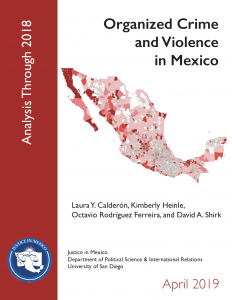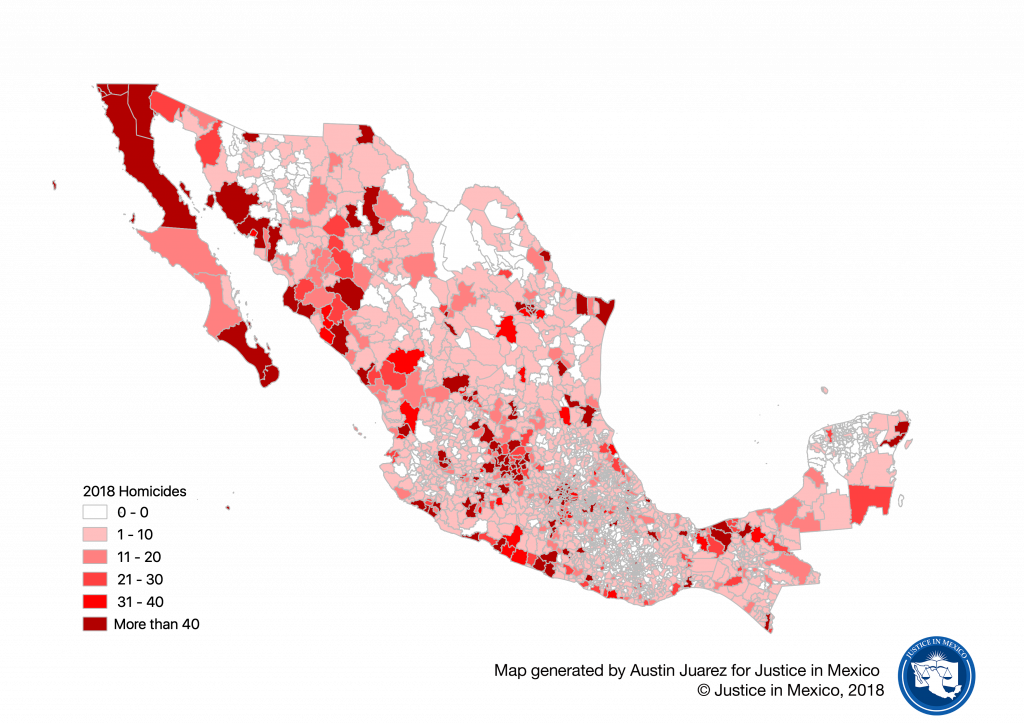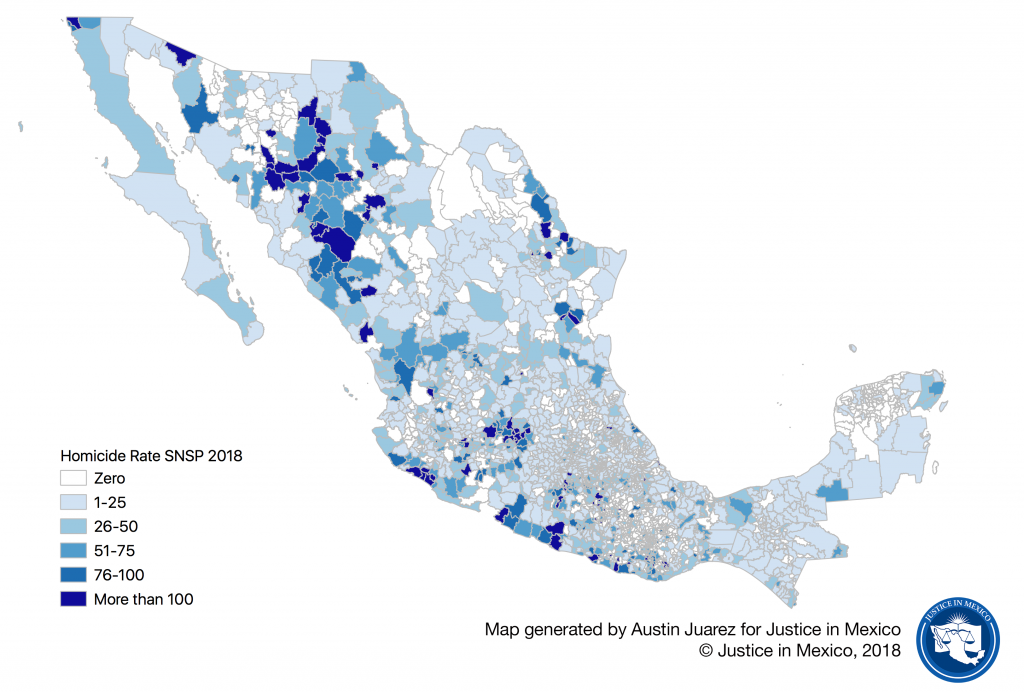
04/30/19- Justice in Mexico, a research-based program at the University of San Diego, released its 2019 report on Organized Crime and Violence in Mexico, co-authored by Laura Calderón, Kimberly Heinle, Octavio Rodríguez Ferreira, and David A. Shirk. This report analyzes the latest available data to broadly assess the current state of violence, organized crime, and human rights in Mexico. The tenth edition in a series is published under a new title to reflect the gradual shift that has occurred to the restructuring illicit drug trade and the rise of new organized crime groups.
In 2018, Mexico saw record violence with 28,816 homicide cases and 33,341 victims reported by the Mexican National Security System (Sistema Nacional de Seguridad Pública, SNSP). This reflects the continued augmentation in violent crime in Mexico for more than a decade with a notable increase in the last few years. The homicide rate has dramatically escalated from 16.9 murders per 100,000 inhabitants in 2015 as reported to UNODC to 27.3 per 100,000 in 2018 based on SNSP figures. In this and past reports, the authors attribute much of the violence, between a third to a half, to the presence of organized crime groups, particularly drug trafficking organizations.
According to the report, violence has become more pervasive throughout the country but remains highly concentrated in a few specific areas, especially in the major drug trafficking zones located in the northwest and the Pacific Coast. The top ten most violent municipalities in Mexico accounted for 33.6% of all homicides in Mexico in 2018, with 24.7% concentrated in the top five: Tijuana (2,246), Ciudad Juárez (1,004), Acapulco (839), Cancún-Benito Juárez (537), Culiacán (500).


Tijuana’s rate of 115 homicide cases per 100,000 inhabitants ranks second to Acapulco’s rate of 127 cases per 100,000 inhabitants. According to Baja California State’s Secretary of Public Security (SSP) reporting, Tijuana saw a significant increase in 2018 of 41% victims up from 2017.
The authors have found that Mexican organized crime groups have become more fragmented, decentralized, and diversified in their activities. Notably, violence in the Mexican state of Guanajuato appears to have risen due to the increased presence of the Santa Rosa de Lima Cartel and an increase in the prevalence of petroleum theft (huichicol). At least nine municipalities in Guanajuato had a murder rate of more than 100 homicides per 100,000 inhabitants.
Record violence in Mexico has disproportionally affected certain populations (e.g. politicians, journalist, and men). In 2018, a major election year, there were 37 victims among mayors, mayoral candidates, and former-mayors. These numbers are up slightly from 35 cases in 2017 but demonstrate a significant increase from 14 victims in 2015 and 6 victims in 2016. A 2018 Justice in Mexico study found that in recent years Mexican journalists were at least three times more likely to be murdered than the general population, while mayors were at least nine times more likely. There were 16 journalists and media workers that were killed in 2018. Additionally, the report finds that men are 8.3 times more likely to be homicide victims than women, with 28,522 male homicide victims.
All told, the authors of the report estimate that over 150,000 people were murdered during the six years of the Peña Nieto administration, the most homicides during any presidential term in recent Mexican history. The current Lopez Obrador administration has proposed a new security agenda centered on citizen security, changes in federal law enforcement, and efforts to minimize tensions in U.S.-Mexican relations. Two of the most important measures that the new government has put forward are the creation of a autonomous federal prosecutor and a national guard.




